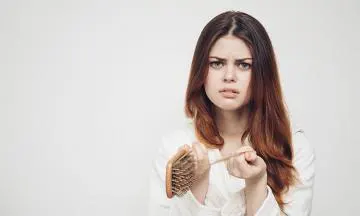

Female Patterned Baldness
Female patterned baldness is one of the most common forms of hair thinning after male patterned baldness. Like males it does not quite progress to a state of complete baldness. However, any which way you look at it, hair loss in women has much impact on a woman’s psyche. It is often distressing and is accompanied by low self-esteem, a forlorn sense of being less attractive along with a lot of anxiety, in social circles. A head full of lustrous locks for a woman exemplifies beauty, feminine grace and poise.
There is a distinctive relationship, in women, between their mother, sisters, aunts and grandmothers – when it comes to hair thinning patterns. The problem tends to run in families and is passed on from one generation to the other. Unlike men, genetic hairloss in women affects the back of the head and also the sides. Hence they do not go bald like men, but lose hair diffusely all over the scalp. This happens because DHT (dihydrotestosterone) – sensitive hair follicles in women are spread diffusely all over the scalp. Females have oestrogen which is a hair-protective hormone in females. When this hormone falls below normal levels and ups the level of male hormone, testosterone in the body which results in hair loss in women. Female patterned baldness (FPB), like male patterned baldness, is triggered by hormonal imbalance in the body. Conditions, such as ovarian cysts (or, PCOS), or menopause are exclusive triggers for female patterned baldness.
Are you experiencing any of the following?
- Gradual hair loss with loss of density over time.
- Hair strands love to stay on your hair brush; pillow; the sink or the floor more than your scalp.
- Scattered hair loss.
- Hair strands appear thinner than before.
- The volume of your hair has reduced.
- Your plait or ponytail appears thinner or the bun smaller than before.
- Leaving the hair loose may not cover the gaps on the head.
- The partition at the top portion of your head appears to be wider than before.
- Family history of hair loss.
If you have ticked 3 or more of the following, you may most likely have female patterned baldness. Consult your trichologist to confirm the diagnosis.




